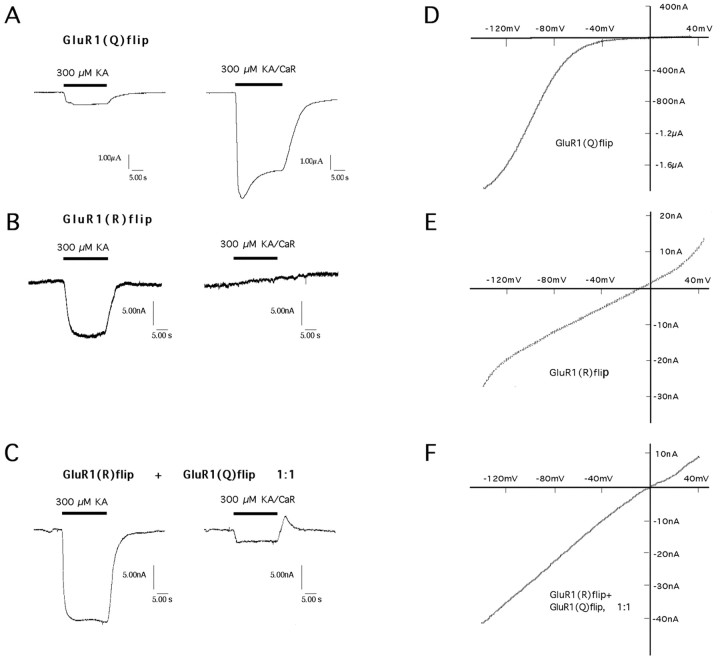Fig. 2.
Comparison of steady-state responses (A–C) and I–V relationships (D–F) of wild-type GluR1(Q)flip (A, D), mutant GluR1(R)flip (B, E), and a 1:1 mix of mutant and wild type (C, F) recorded inXenopus oocytes. Kainate (KA; 300 μm) was used as the agonist, either in normal Ringer's (left traces in A–C) or in calcium Ringer's (CaR) (right tracesin A–C). GluR1(Q)flip receptor channels have steady-state currents in the microampere range, whereas GluR1(R)flip receptor channels yield nanoampere range currents (notescale bars). The steady-state current when GluR1(R)flip is coexpressed with GluR1(Q) is also in the nanoampere range. The gentle upslope in B, right-hand panel, represents a slight reduction over time of the holding current (“leak current”) and is typically found when oocytes are bathed in calcium Ringer's containing 80 mm calcium. Inspection ofD and E reveals that the mutant GluR1(R)flip, contrary to wild-type GluR1(Q)flip, has a linearI–V curve, and on coexpression with wild-type GluR1(Q)flip, linearizes theI–V curve of the heteromeric complex. Coexpression also dramatically decreases the permeability to calcium.

